Abstract
The observation that exposure of the leaf canopy to increasing concentrations of CO2 (100-400 μl/l) decreases the influx of nitrate to the leaf blades, but not to the roots or stalks (largely leaf sheaths), was reconfirmed using 15NO3−. Decreases in leaf nitrate supply were associated with decreases in induction of nitrate reductase, thus supporting the view that the influx of nitrate to a tissue is a major factor in regulation of the level of nitrate reductase. The whole plant 15N distribution data show that the CO2 effects were due to decreased influx of nitrate into the leaf blade rather than CO2-enhanced nitrate reduction. The decreases in nitrate accumulation by the leaf blade with increases in CO2 concentration were only partially accounted for by differences in transpiration. Because the initial malate concentration of root tissue (detopped plants) had no subsequent effect on nitrate uptake, it seems unlikely that high levels of malate induced by CO2 were responsible for the exclusion of nitrate from the leaf blades.
Time course changes in nitrate and malate concentrations in root tissue (detopped plants) during nitrate uptake showed that oxidation of extra malate does not stimulate nitrate uptake and that malate is not specifically required as an energy source at the ion carrier level.
The observation that nitrate and malate concentrations in corn leaf blades were negatively correlated was reconfirmed with 25 additional corn genotypes. However, using the same tissue, a higher correlation was obtained between malate plus aconitate and nitrate, suggesting that organic acids other than malate could be involved. The proposal that reduction of nitrate in the leaf is stoichiometrically related to malate production is a valid explanation of the relationship only if malate oxidation does not provide NADH for nitrate reduction. However, addition of malate and NAD to crude extracts (in vitro assay) or malate to leaf blade sections (in vivo assay) caused nitrate reduction. Because of these observations and the known intracellular location of NAD-malate dehydrogenase and nitrate reductase, we believe that malate oxidation is one of the major sources of NADH for nitrate reduction in corn leaf blades in situ.
Full text
PDF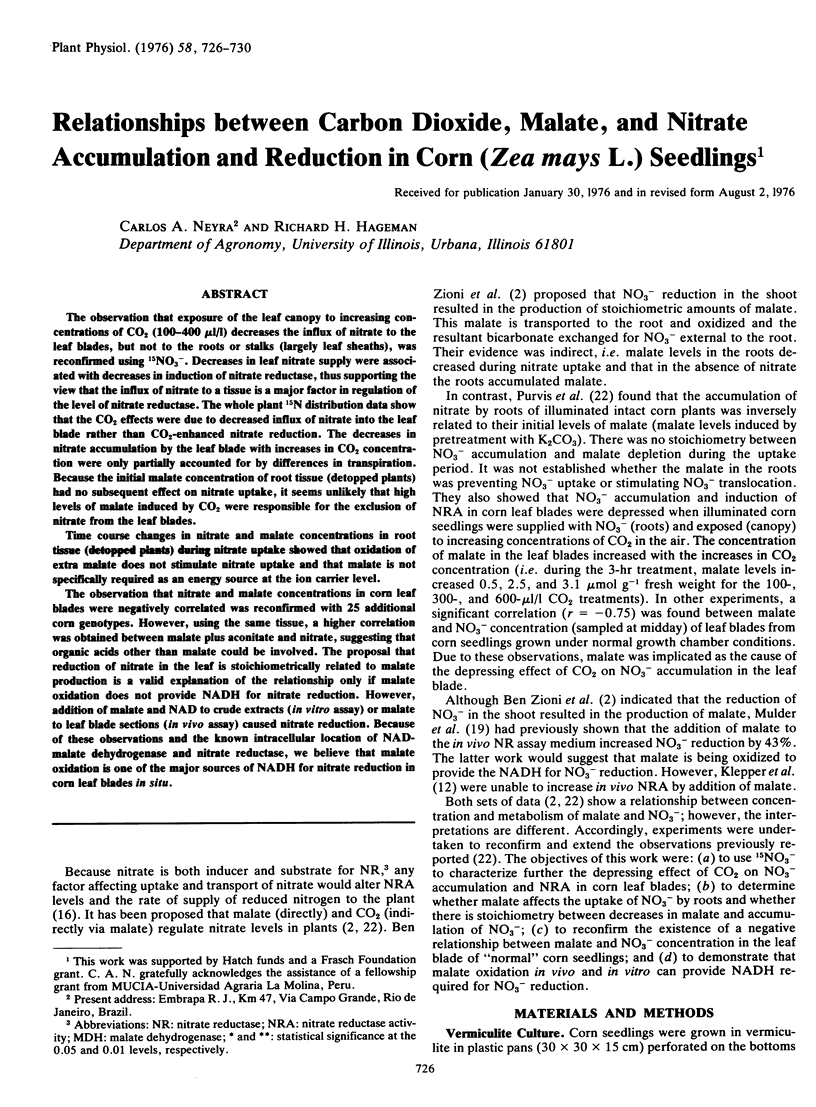
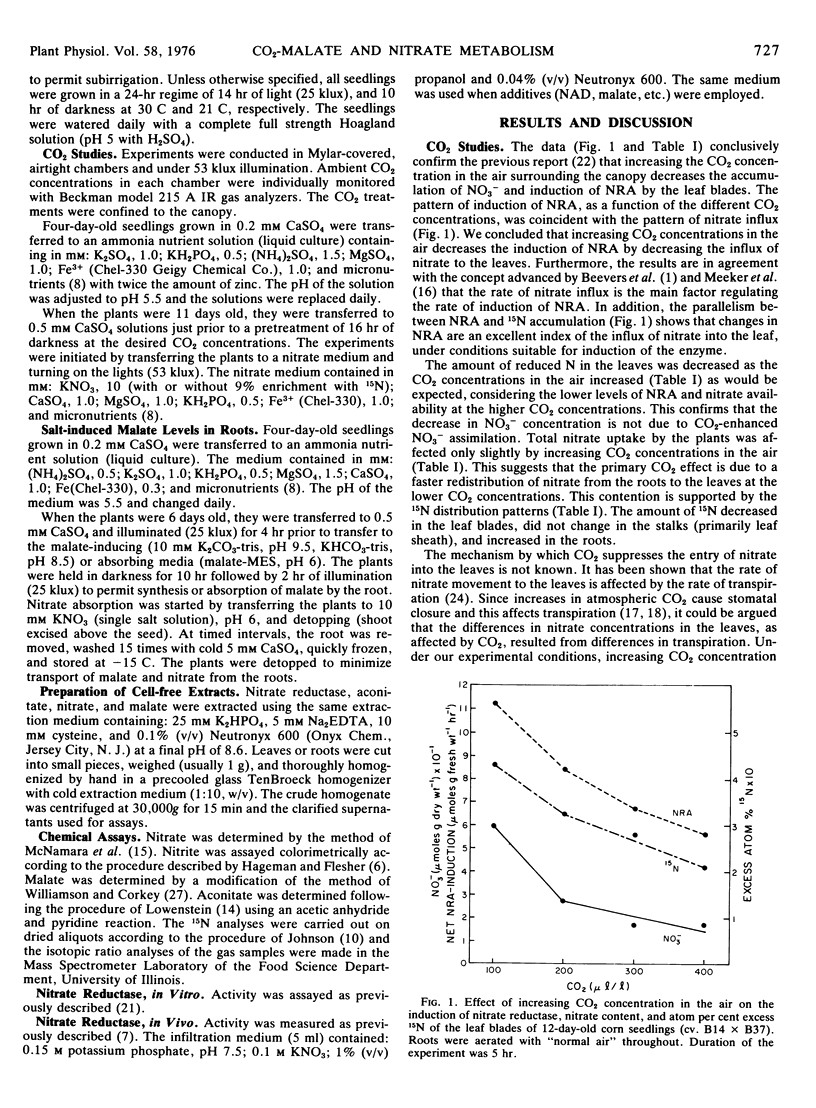
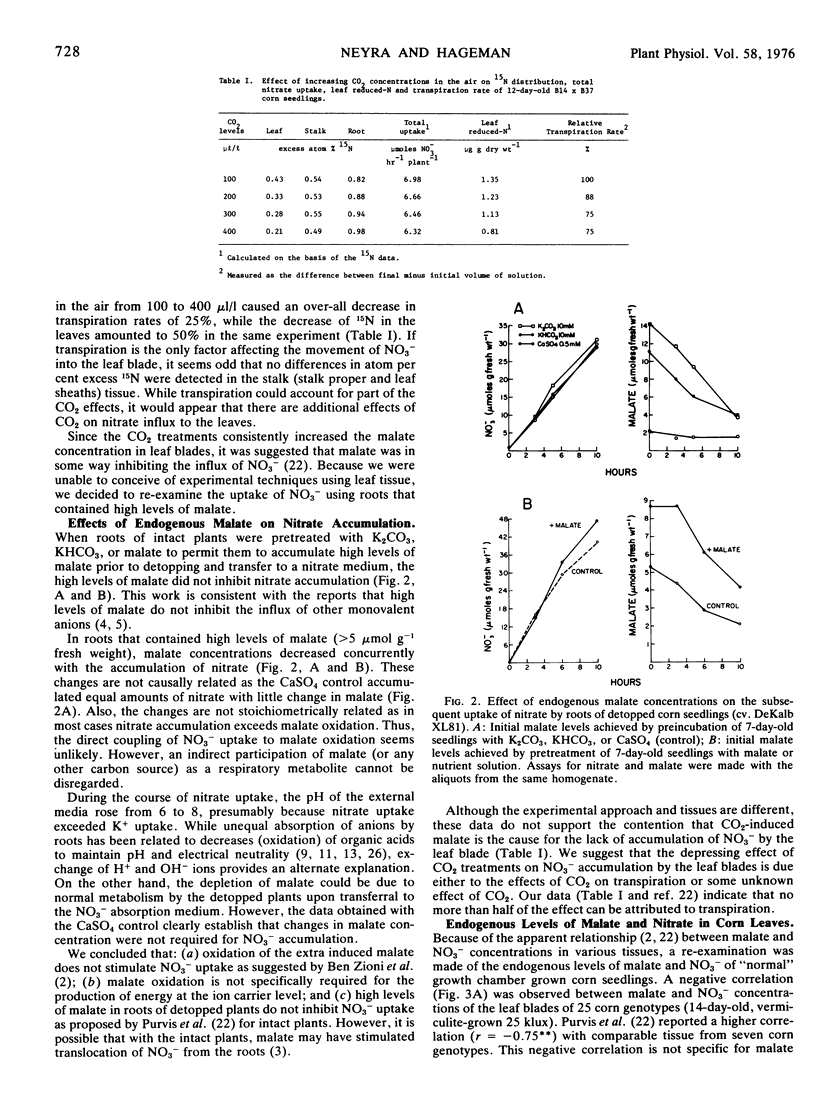
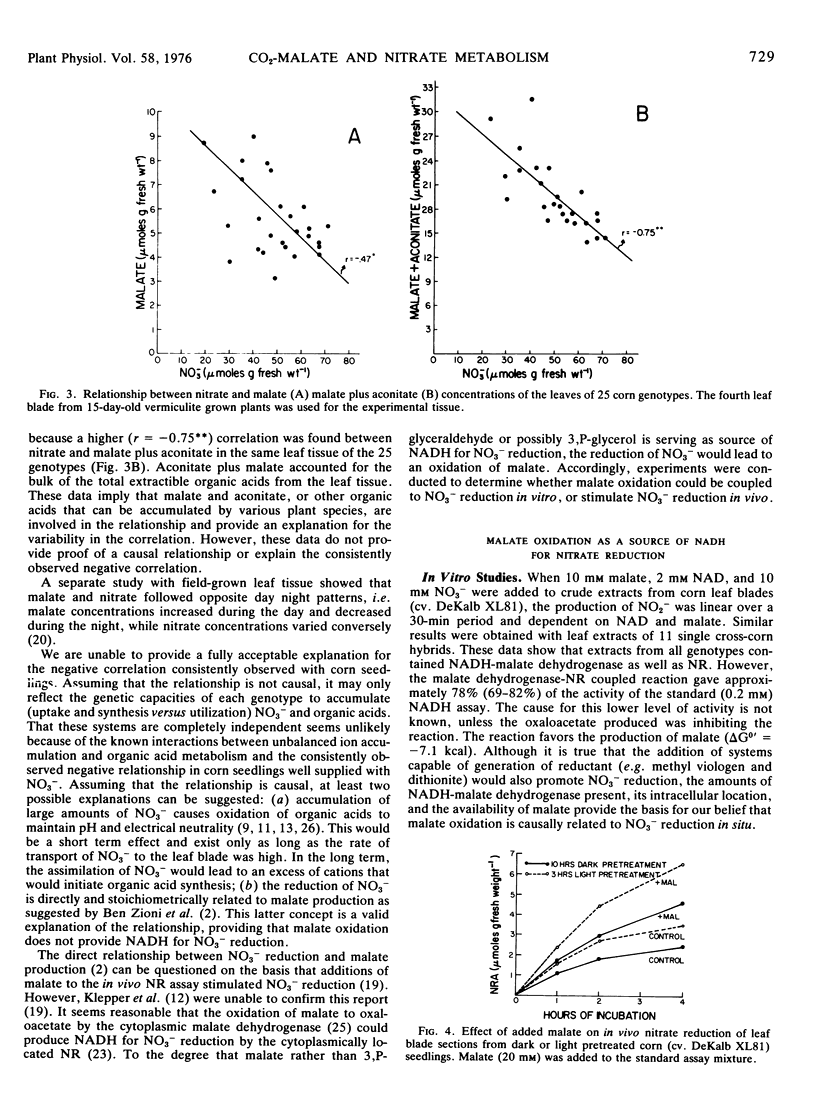
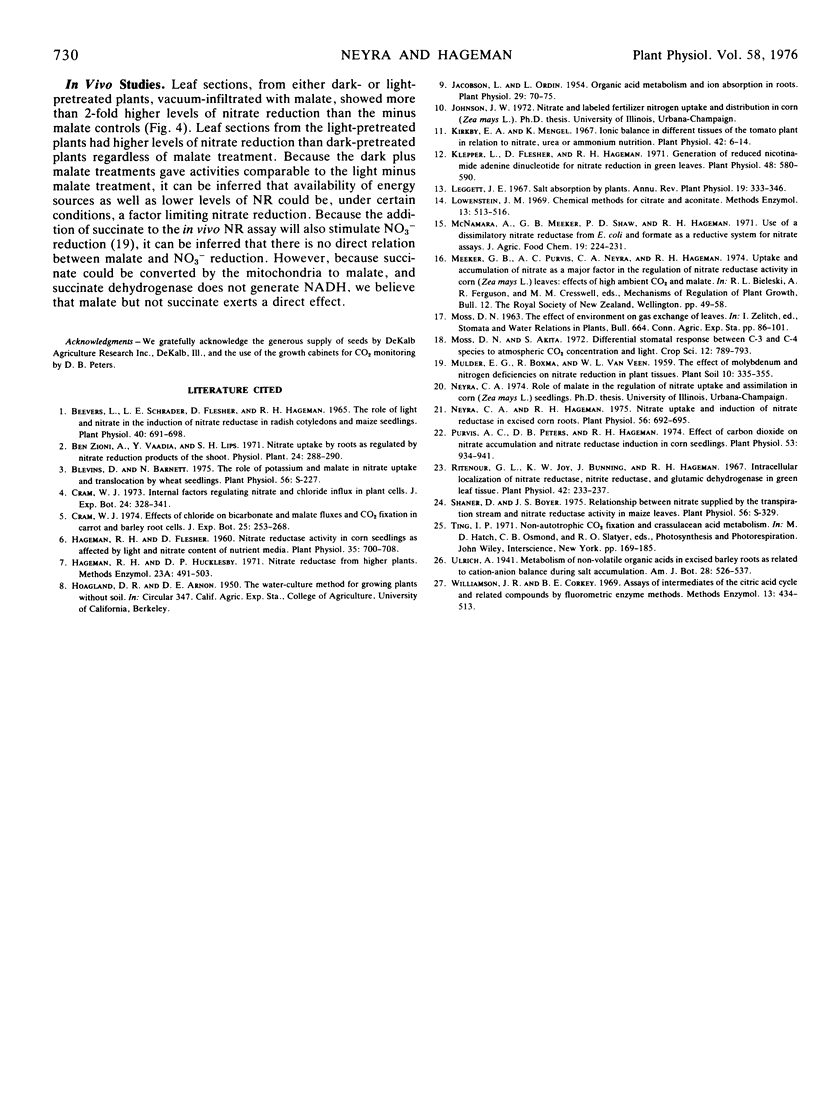
Selected References
These references are in PubMed. This may not be the complete list of references from this article.
- Beevers L., Schrader L. E., Flesher D., Hageman R. H. The Role of Light and Nitrate in the Induction of Nitrate Reductase in Radish Cotyledons and Maize Seedlings. Plant Physiol. 1965 Jul;40(4):691–698. doi: 10.1104/pp.40.4.691. [DOI] [PMC free article] [PubMed] [Google Scholar]
- Coleman E. C., Friedman L. Fatty acids in tissue lipids of rats fed Sterculia foetida oil. J Agric Food Chem. 1971 Mar-Apr;19(2):224–228. doi: 10.1021/jf60174a045. [DOI] [PubMed] [Google Scholar]
- Hageman R. H., Flesher D. Nitrate Reductase Activity in Corn Seedlings as Affected by Light and Nitrate Content of Nutrient Media. Plant Physiol. 1960 Sep;35(5):700–708. doi: 10.1104/pp.35.5.700. [DOI] [PMC free article] [PubMed] [Google Scholar]
- Jacobson L., Ordin L. Organic Acid Metabolism and Ion Absorption in Roots. Plant Physiol. 1954 Jan;29(1):70–75. doi: 10.1104/pp.29.1.70. [DOI] [PMC free article] [PubMed] [Google Scholar]
- Kirkby E. A., Mengel K. Ionic balance in different tissues of the tomato plant in relation to nitrate, urea, or ammonium nutrition. Plant Physiol. 1967 Jan;42(1):6–14. doi: 10.1104/pp.42.1.6. [DOI] [PMC free article] [PubMed] [Google Scholar]
- Klepper L., Flesher D., Hageman R. H. Generation of reduced nicotinamide adenine dinucleotide for nitrate reduction in green leaves. Plant Physiol. 1971 Nov;48(5):580–590. doi: 10.1104/pp.48.5.580. [DOI] [PMC free article] [PubMed] [Google Scholar]
- Neyra C. A., Hageman R. H. Nitrate uptake and induction of nitrate reductase in excised corn roots. Plant Physiol. 1975 Nov;56(5):692–695. doi: 10.1104/pp.56.5.692. [DOI] [PMC free article] [PubMed] [Google Scholar]
- Purvis A. C., Peters D. B., Hageman R. H. Effect of carbon dioxide on nitrate accumulation and nitrate reductase induction in corn seedlings. Plant Physiol. 1974 Jun;53(6):934–941. doi: 10.1104/pp.53.6.934. [DOI] [PMC free article] [PubMed] [Google Scholar]
- Ritenour G. L., Joy K. W., Bunning J., Hageman R. H. Intracellular localization of nitrate reductase, nitrite reductase, and glutamic Acid dehydrogenase in green leaf tissue. Plant Physiol. 1967 Feb;42(2):233–237. doi: 10.1104/pp.42.2.233. [DOI] [PMC free article] [PubMed] [Google Scholar]


